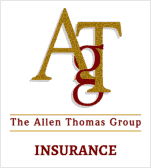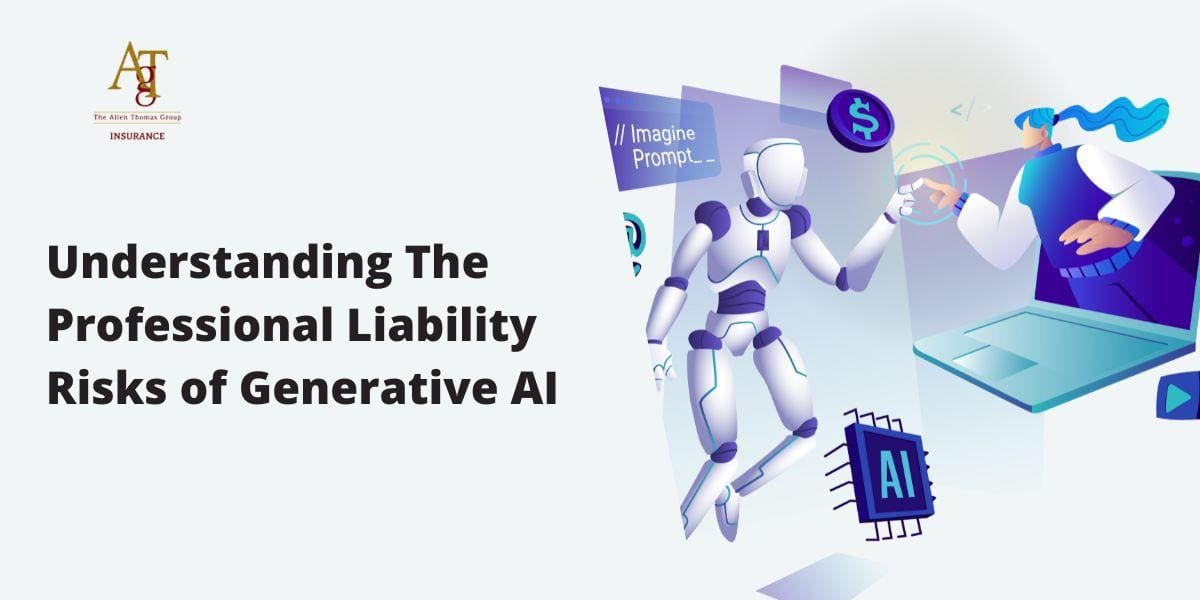In today’s fast-paced digital world, social media platforms have become an integral part of our daily lives and a crucial tool for businesses to connect with their customers.
However, as the reach and influence of these platforms continue to grow, so do the risks associated with their use.
Social media liability has emerged as a significant concern for businesses of all sizes, as a single post, comment, or share can quickly escalate into a viral sensation with far-reaching consequences.
At The Allen Thomas Group, we understand the challenges that businesses face when navigating the complex world of social media liability.
With over 20 years of experience providing comprehensive business insurance solutions to businesses across the United States, we’ve witnessed firsthand the devastating impact that a social media crisis can have on a company’s reputation, finances, and long-term success.
In this article, we’ll dive into the various aspects of social media liability, exploring the types of risks businesses face, the legal and regulatory framework governing social media use, and the proactive steps companies can take to protect themselves.
We’ll also discuss the importance of having a robust social media risk management strategy and the role that insurance can play in mitigating potential losses.
Key Takeaways
- Social media presents significant risks for businesses, including legal liabilities, financial losses, and reputational damage.
- To effectively manage these risks, businesses need a comprehensive social media risk management strategy that includes clear policies, employee training, ongoing monitoring and moderation, and appropriate insurance coverage.
- Conducting regular social media audits and staying informed about emerging trends and legal developments is essential for staying ahead of potential risks and liabilities.
- Collaborating with legal, technology, and insurance experts can help businesses develop effective risk management strategies and ensure compliance with relevant laws and regulations.
- By taking a proactive approach to social media risk management and working with a trusted insurance partner, businesses can confidently leverage the power of social media while protecting themselves from potential liabilities and reputational harm.
Understanding Social Media Liability
Social media liability encompasses a wide range of legal and financial risks that businesses may encounter as a result of their online activities.
These risks can arise from the actions of employees, customers, or even third parties, and can have severe consequences for a company’s reputation and bottom line.
Types of Liability
- Defamation: Defamation, which includes both libel (written) and slander (spoken), occurs when false statements are made about an individual or business, causing harm to their reputation. In the context of social media, defamation can happen when an employee posts negative comments about a competitor or when a customer leaves a false review about a company’s products or services.
- Copyright infringement: Copyright infringement happens when someone uses another person’s creative work without permission. On social media, this can occur when a business shares an image, video, or piece of text without obtaining the necessary rights or attributing the content to the original creator.
- Privacy violations: Privacy violations can occur when a business collects, uses, or discloses personal information about its customers or employees without their consent. In the age of social media, privacy concerns have become increasingly prevalent, with many platforms collecting vast amounts of user data for targeted advertising and other purposes.
- False advertising: False advertising refers to the practice of making misleading or untrue statements about a product or service. On social media, businesses may face liability if they make exaggerated claims about their offerings or fail to disclose important information about their products.
- Intellectual property disputes: Intellectual property disputes can arise when a business uses another company’s trademarks, logos, or other protected material without permission. In the fast-paced world of social media, it’s easy to accidentally infringe on someone else’s intellectual property rights.
- Cyberbullying and harassment: Cyberbullying and harassment can occur when employees or customers use social media to intimidate, threaten, or harass others. Businesses may be held liable for the actions of their employees if they fail to take appropriate measures to prevent or address such behavior.
- Data breaches: Data breaches can happen when sensitive information, such as customer data or financial records, is accessed or stolen by unauthorized parties. In the event of a data breach, businesses may face significant legal and financial consequences, as well as damage to their reputation.
- Employee social media misconduct: Employee social media misconduct can occur when workers post inappropriate content, share confidential information, or engage in behavior that reflects poorly on the company. Businesses may be held responsible for the actions of their employees if they don’t have clear social media policies in place.
Real-Life Example: A Cautionary Tale
In 2013, a major fashion retailer faced a significant social media crisis when an employee posted a series of offensive tweets on the company’s official Twitter account.
The tweets, which contained racist and insensitive language, quickly went viral, sparking outrage among customers and the general public.
The company scrambled to delete the tweets and issue an apology, but the damage was already done. The incident made headlines around the world, and the company’s reputation took a significant hit.
Sales declined, and the company faced a barrage of criticism and negative sentiment online.
This real-life example illustrates the potential impact of a single employee’s actions on a company’s reputation and bottom line.
It also underscores the importance of having clear social media policies and employee training programs in place to prevent such incidents from occurring in the first place.

Legal and Regulatory Framework
To effectively manage social media liability, businesses must have a thorough understanding of the legal and regulatory framework governing online activities.
- Section 230 of the Communications Decency Act: This law provides immunity to social media platforms for user-generated content. However, businesses can still be held liable for their own posts and the content they create.
- Digital Millennium Copyright Act (DMCA): The DMCA provides a framework for addressing copyright infringement online, including a notice-and-takedown process that allows copyright owners to request the removal of infringing content.
- Federal Trade Commission (FTC) guidelines: The FTC has established guidelines for online advertising and endorsements, requiring businesses to disclose any material connections they have with endorsers and to ensure that their claims are truthful and not misleading.
- State-specific social media laws: Many states have enacted their own laws governing social media use, such as those related to employee privacy and the use of social media in hiring decisions.
- International data protection regulations: For businesses operating globally, it’s essential to comply with international data protection regulations, such as the General Data Protection Regulation (GDPR) in the European Union and the California Consumer Privacy Act (CCPA) in the United States.
- Advertising standards: Advertising standards bodies, such as the National Advertising Division (NAD) and the International Chamber of Commerce (ICC), have developed guidelines for ethical and responsible advertising practices, including those related to social media.
Assessing Your Business’s Social Media Risks
To effectively protect your business from social media liability, it’s crucial to assess your company’s unique risks and vulnerabilities.
This process involves considering factors such as your industry, the size and scope of your social media presence, the types of content you share, and the level of employee engagement on social media.
Factors to Consider
- Industry-specific challenges: Different industries face unique social media challenges. For example, healthcare companies must navigate strict patient privacy regulations, while financial institutions must comply with complex advertising and disclosure requirements.
- Size and scope of social media presence: The larger your company’s social media presence, the greater the potential for liability. Businesses with a significant following or those that rely heavily on social media for marketing and customer engagement may face higher risks.
- Types of content shared: The nature of the content your business shares on social media can also impact your liability risk. For example, posting controversial or politically charged content may increase the likelihood of backlash or legal action.
- Employee social media use: Your employees’ social media activities, both on and off the job, can have significant implications for your business. It’s essential to have clear policies in place governing employee social media use and to provide training on appropriate online behavior.
- Influencer partnerships: If your business engages in influencer marketing, it’s crucial to make sure that these partnerships comply with FTC guidelines and that influencers disclose their relationships with your brand.
- User-generated content: Encouraging customers to share their experiences with your products or services can be a powerful marketing tool, but it also opens the door to potential liability issues, such as defamation or copyright infringement.
- Platform-specific risks: Each social media platform has its own unique features, audience, and potential risks. For example, the short-form video format of TikTok may present different challenges than the professional networking environment of LinkedIn.
Industry Spotlight: Healthcare and Social Media Liability
Healthcare providers face unique challenges when it comes to social media liability.
In addition to the risks that all businesses face, such as defamation and copyright infringement, healthcare organizations must also navigate complex patient privacy regulations like the Health Insurance Portability and Accountability Act (HIPAA).
Some key considerations for healthcare providers include:
- Ensuring that any patient information shared on social media is properly de-identified and does not violate HIPAA rules
- Training employees on the appropriate use of social media and the importance of maintaining patient confidentiality
- Developing clear policies and procedures for responding to patient inquiries or complaints on social media platforms
- Monitoring social media channels for potential privacy breaches or instances of employee misconduct
By taking a proactive approach to social media risk management and working with experienced insurance providers like The Allen Thomas Group, healthcare organizations can harness the power of social media while protecting patient privacy and mitigating liability risks.

Conducting a Social Media Audit
To assess your business’s social media risks, it’s essential to conduct a thorough audit of your online presence. This process should involve:
- Evaluating current social media policies: Review your existing social media policies to make sure they’re comprehensive, up-to-date, and aligned with current legal and regulatory requirements.
- Identifying potential vulnerabilities: Examine your social media accounts and content to identify potential areas of risk, such as outdated or inaccurate information, inappropriate employee posts, or unmoderated user comments.
- Assessing compliance with regulations: Make sure that your social media practices comply with relevant laws and regulations, such as the GDPR, CCPA, and FTC guidelines.
- Analyzing past incidents or crises: Review any previous social media incidents or crises your business has faced to identify areas for improvement and to inform your future risk management strategies.
Developing a Comprehensive Social Media Risk Management Strategy
Once you’ve assessed your business’s social media risks, the next step is to develop a comprehensive risk management strategy.
This strategy should include clear policies, employee training programs, and ongoing monitoring and moderation of your social media presence.
Creating a Social Media Policy
A robust social media policy is the foundation of your risk management strategy.
Your policy should:
- Establish guidelines for employee social media use, both on and off the job
- Define clear content approval processes to ensure that all posts align with your brand values and comply with legal and regulatory requirements
- Outline crisis management protocols to guide your response in the event of a social media incident
- Ensure compliance with all relevant laws and regulations
Tips for Developing an Effective Social Media Policy
- Involve key stakeholders from across your organization, including marketing, legal, HR, and IT, in the policy development process
- Use clear, concise language that is easy for employees to understand and follow
- Provide specific examples of acceptable and unacceptable behavior on social media
- Regularly review and update your policy to ensure it remains current and relevant
Implementing Employee Training Programs
To make sure that your social media policy is effective, it’s essential to provide employees with regular training on social media best practices.
Your training program should:
- Educate employees on the importance of responsible social media use and the potential consequences of inappropriate behavior
- Provide clear examples of acceptable and unacceptable conduct on social media
- Highlight the key elements of your social media policy and employees’ roles in upholding it
- Include regular updates to ensure that employees stay current with changes in platform policies or legal requirements
Best Practices for Employee Social Media Training
- Make training engaging and interactive, using real-life examples and scenarios
- Tailor training to different departments or roles within your organization
- Offer ongoing support and resources to help employees navigate social media challenges
- Encourage open communication and feedback to identify areas for improvement
Monitoring and Moderating Social Media Presence
Effective social media risk management requires ongoing monitoring and moderation of your online presence.
This process should involve:
- Using social listening tools to track mentions of your brand, products, or services across social media platforms
- Responding promptly and professionally to customer inquiries, complaints, or negative feedback
- Identifying and addressing potential issues proactively, such as removing inappropriate content or correcting inaccurate information
- Collaborating with legal and PR teams to ensure that your social media activities align with your overall business strategy and risk management goals
The Role of Social Media Monitoring Tools
Social media monitoring tools can help businesses streamline their risk management efforts by automating many of the tasks involved in tracking and analyzing online conversations.
These tools can:
- Monitor multiple social media platforms for mentions of your brand, products, or keywords
- Provide real-time alerts for potential issues or crises
- Analyze sentiment and identify trends or patterns in user behavior
- Generate reports and insights to inform your social media strategy
By leveraging social media monitoring tools, businesses can proactively identify and address potential risks, while also gaining valuable insights into customer needs and preferences.
Protecting Your Business with Insurance Solutions
Despite your best efforts to manage social media risks, incidents can still occur.
This is where insurance comes in.
Having the right insurance coverage can help protect your business from the financial fallout of a social media crisis, allowing you to focus on rebuilding your reputation and moving forward.
Types of Insurance Coverage
- Cyber liability insurance for social media: Cyber liability insurance provides coverage for losses arising from data breaches, cyber attacks, and other digital incidents. This can include the costs of notifying affected customers, providing credit monitoring services, and defending against legal claims related to social media activities.
- Media liability insurance: Media liability insurance covers claims related to content created and distributed by your business, including social media posts. This can include coverage for defamation, copyright infringement, and other content-related risks.
- Professional liability insurance (E&O): Professional liability insurance, also known as errors and omissions (E&O) insurance, protects your business against claims of negligence or mistakes in your professional services. This can include coverage for social media-related issues, such as providing inaccurate advice or recommendations to clients.
- Directors and Officers (D&O) liability insurance: D&O insurance provides coverage for claims made against your company’s directors and officers, including those related to their social media activities. This can be particularly important for high-profile executives who maintain a strong online presence.
- General liability insurance: General liability insurance provides broad coverage for a range of risks, including those related to third-party property damage or bodily injury. While it may not specifically cover social media-related claims, it can provide a valuable layer of protection for your business.
- Business interruption coverage: Business interruption coverage can help replace lost income if your business is forced to temporarily close due to a covered event, such as a social media crisis that damages your reputation and leads to a significant loss of customers.
- Reputation damage coverage: Reputation damage coverage is a specialized type of insurance that provides financial protection for businesses facing a crisis that threatens their reputation. This can include coverage for public relations expenses, crisis management consulting, and other costs associated with rebuilding your brand’s image.
The Allen Thomas Group’s Tailored Insurance Solutions
At The Allen Thomas Group, we understand that every business is unique, with its own specific risks and challenges.
That’s why we offer tailored insurance solutions designed to meet the needs of businesses operating in today’s digital landscape.
Our services include:
- Customized social media risk assessment: We work with you to identify and assess your business’s specific social media risks, taking into account factors such as your industry, size, and online presence.
- Policy customization for digital presence: Based on your unique needs and risk profile, we develop customized insurance policies that provide comprehensive coverage for your digital activities, including social media use.
- Claims management for online incidents: In the event of a social media-related claim or incident, our experienced claims management team is here to guide you through the process, ensuring that you receive the support and resources you need to resolve the issue as quickly and efficiently as possible.
- Ongoing support and consultation: We provide ongoing support and consultation to help you stay ahead of emerging social media risks and trends, and to make sure that your insurance coverage remains aligned with your evolving needs.
- Educational resources for clients: We offer a range of educational resources, including blog posts, webinars, and training sessions, to help our clients stay informed about social media liability issues and best practices for risk management.
- Regular insurance and risk management reviews: We conduct regular reviews of your insurance coverage and risk management strategies to ensure that they remain effective and up-to-date in the face of changing social media landscapes and legal requirements.
Responding to a Social Media Crisis
When a social media crisis occurs, it’s essential to act quickly and decisively to minimize the impact on your business.
The following steps can help guide your response:
- Assess the situation and gather facts: Quickly gather as much information as possible about the crisis, including the source of the issue, the platforms involved, and the potential impact on your business.
- Communicate transparently with stakeholders: Be open and transparent in your communication with internal and external stakeholders, providing regular updates and answering questions as honestly and directly as possible.
- Implement corrective actions: Take swift action to address the root cause of the crisis, such as removing offensive content, issuing an apology, or providing compensation to affected customers.
- Monitor ongoing developments: Keep a close eye on the situation as it evolves, monitoring social media channels for additional comments or reactions and adjusting your response as needed.
- Evaluate and adapt your response: After the crisis has been resolved, take time to evaluate the effectiveness of your response and identify areas for improvement. Use this knowledge to refine your crisis response plan and ensure that you’re better prepared for future incidents.
Real-Life Scenario: A Lesson in Crisis Management
Imagine this: One of your employees, frustrated with a difficult customer, takes to their personal Twitter account to vent.
In a moment of poor judgment, they post a series of tweets that are not only unprofessional but also contain sensitive information about the customer.
The tweets quickly go viral, with angry customers and members of the public calling for a boycott of your business.
In this scenario, having a well-developed crisis response plan can make all the difference. Your crisis response team would quickly spring into action, assessing the situation and gathering all relevant facts.
They would work to remove the offending tweets and issue a public statement apologizing for the employee’s actions and reaffirming your commitment to customer privacy.
Behind the scenes, your team would also be communicating with the affected customer, offering a sincere apology and taking steps to address any potential harm caused by the disclosure of their information.
You might also need to take disciplinary action against the employee involved and review your social media policies to prevent similar incidents from happening in the future.
Throughout the crisis, your team would be monitoring social media channels and other outlets to gauge public sentiment and adjust your response accordingly.
By acting quickly, communicating transparently, and taking decisive action to address the root cause of the crisis, you can minimize the damage to your reputation and begin the process of rebuilding trust with your customers.
This real-life scenario underscores the importance of having a robust social media risk management strategy in place.
By being prepared for the worst and having a clear plan of action, you can navigate even the most challenging social media crises and emerge stronger on the other side.
Staying Ahead of Emerging Trends and Risks
The social media landscape is constantly evolving, with new platforms, technologies, and trends emerging all the time.
To effectively protect your business from social media liability, it’s essential to stay ahead of these changes and adapt your risk management strategies accordingly.
Technological Advancements
Some of the key technological advancements that are shaping the future of social media include:
- Artificial Intelligence (AI) in content creation and moderation: AI-powered tools are increasingly being used to create and curate social media content, from chatbots that can engage with customers to algorithms that can optimize content for maximum engagement. AI is also being leveraged to help businesses monitor and moderate social media conversations, identifying potential risks and crises in real-time. But there are risks with Generative AI to pay attention to.
- Blockchain and decentralized social networks: Blockchain technology is enabling the development of decentralized social networks, which operate on a peer-to-peer basis without the need for central authorities. These networks have the potential to offer greater privacy, security, and control for users, but they also present new challenges for businesses in terms of advertising, data management, and liability.
- Augmented and Virtual Reality (AR/VR) platforms: The growth of AR and VR technologies is creating new opportunities for businesses to engage with customers on social media, but also new risks related to user privacy, data security, and content moderation. As these technologies become more mainstream, businesses will need to develop strategies for creating immersive, engaging experiences while also protecting users and mitigating potential liabilities.
- Voice-based social media and smart assistants: The rise of voice assistants like Alexa and Siri is driving the growth of voice-based social media, which allows users to interact with brands and other users using natural language commands. While this presents new opportunities for businesses to connect with customers, it also raises concerns around data privacy, security, and accessibility.
- Ephemeral content and short-form video: Ephemeral content, such as Instagram Stories and Snapchat posts that disappear after a set period, is becoming increasingly popular, as is short-form video content on platforms like TikTok. These formats present new challenges for businesses in terms of content creation, user engagement, and risk management, as the rapid pace and temporary nature of the content can make it difficult to monitor and control.
Evolving Legal Landscape
As social media continues to evolve, so too does the legal landscape governing its use.
Some of the key legal trends that businesses need to be aware of include:
- Changes to platform policies and terms of service: Social media platforms are constantly updating their policies and terms of service to address emerging issues and concerns, such as hate speech, misinformation, and user privacy. Businesses need to stay on top of these changes to ensure that they remain in compliance and protect themselves from potential liability.
- New legislation and regulations: Governments around the world are introducing new laws and regulations to address the challenges posed by social media, such as the GDPR in Europe and the CCPA in California. These laws often impose strict requirements on businesses in terms of data collection, use, and protection, as well as content moderation and user rights.
- Evolving legal precedents and case law: As social media-related legal cases make their way through the courts, they’re setting important precedents that will shape the future of social media liability. For example, recent cases have dealt with issues such as the scope of Section 230 immunity, the legal status of social media platforms, and the responsibilities of businesses in moderating user-generated content.
Adapting Your Social Media Strategy
To stay ahead of these emerging trends and risks, businesses need to be proactive in adapting their social media strategies.
This includes:
- Regularly reviewing and updating social media policies: As the social media landscape evolves, it’s essential to regularly review and update your social media policies to ensure that they remain relevant and effective. This should involve input from key stakeholders across your organization, including legal, marketing, HR, and IT.
- Investing in employee training and education: Provide regular training and education to your employees to ensure that they’re aware of the latest social media risks and best practices and that they understand their role in protecting your business from liability. This can include training on topics such as data privacy, content creation, and crisis management.
- Collaborating with legal and technology experts: Work closely with legal and technology experts to ensure that your social media practices are compliant with the latest laws and regulations and that you’re taking advantage of the latest tools and technologies to manage your social media presence. This can include partnering with law firms that specialize in social media liability, as well as technology providers that offer solutions for content moderation, data management, and risk assessment.
- Developing a forward-looking content strategy: As new social media platforms and formats emerge, it’s important to develop a content strategy that is flexible and adaptable. This can include experimenting with new types of content, such as short-form video or AR experiences, while also ensuring that your content is aligned with your brand values and risk management goals.
- Prioritizing transparency and user trust: In an era of increasing scrutiny around social media practices, businesses that prioritize transparency and user trust will be better positioned to weather potential crises and maintain the loyalty of their customers. This can include being upfront about your data collection and use practices, providing clear and accessible privacy controls, and engaging in open and honest communication with your audiences.

Common Questions about Social Media Liability
As a business owner or manager, you may have many questions about how to effectively manage social media liability risks.
Here are some common questions and answers to help guide your efforts:
Q: What is the best way to prevent social media crises from happening in the first place?
A: The most effective way to prevent social media crises is to have a comprehensive risk management strategy in place that includes clear policies, regular employee training, and proactive monitoring and moderation of your social media channels.
By identifying potential risks early and having a plan in place to address them, you can often prevent crises from escalating.
Q: How can I balance the need for social media engagement with the need to protect my business from liability?
A: Balancing social media engagement and risk management requires a strategic approach that prioritizes both goals.
This can include developing a content strategy that aligns with your brand values and risk tolerance, providing clear guidelines for employee and customer interactions on social media, and investing in tools and resources to help you monitor and moderate your social media presence effectively.
Q: What should I do if an employee posts something inappropriate or offensive on social media?
A: If an employee posts something inappropriate or offensive on social media, it’s important to act quickly and decisively to minimize the potential damage to your reputation.
This can include removing the offending content, issuing a public apology, and taking disciplinary action against the employee as appropriate. It’s also important to review your social media policies and training programs to identify any gaps or weaknesses that may have contributed to the incident.
Q: How can I protect my business from liability when working with influencers or third-party content creators?
A: When working with influencers or third-party content creators, it’s important to have clear contracts and agreements in place that outline the terms of the relationship, including content ownership, disclosure requirements, and liability provisions.
You should also provide clear guidelines and expectations for the content that will be created and shared on your behalf, and monitor the content regularly to ensure that it aligns with your brand values and risk management goals.
Enhance and Protect Your Businesses Future
Social media has become an essential tool for businesses of all sizes, but it also presents significant risks in terms of liability and reputational damage.
To protect your business in the age of viral content, it’s essential to develop a comprehensive social media risk management strategy that includes clear policies, employee training, ongoing monitoring and moderation, and robust insurance coverage.
At The Allen Thomas Group, we understand the challenges that businesses face in navigating the complex world of social media liability.
Our team of experienced insurance professionals is here to help you assess your risks, develop tailored insurance solutions, and provide ongoing support and guidance to ensure that your business is protected.
By taking a proactive approach to social media risk management and working with a trusted insurance partner like The Allen Thomas Group, you can confidently embrace the opportunities of social media while minimizing the potential for liability and reputational harm.
We encourage you to take the first step in protecting your business by reaching out to us for a consultation or risk assessment.
Together, we can develop a customized strategy to help your business thrive in the digital age while staying protected from the risks of social media liability.
Actions to Take
- Schedule a consultation with The Allen Thomas Group to assess your business’s social media risks and discuss tailored insurance solutions.
- Review and update your social media policies to ensure they’re comprehensive, up-to-date, and aligned with current legal and regulatory requirements.
- Implement regular employee training programs on social media best practices and risk management.
- Conduct a thorough audit of your business’s social media presence to identify potential vulnerabilities and areas for improvement.
- Stay informed about the latest social media trends, platform updates, and legal developments that could impact your business’s risk exposure.
- Develop a comprehensive crisis response plan to guide your actions in the event of a social media incident or emergency.
- Consider investing in specialized insurance coverage, such as cyber liability or reputation damage coverage, to protect your business from the financial impact of social media-related risks.
- Foster a culture of responsible social media use within your organization, emphasizing the importance of protecting your brand, customers, and stakeholders.
By taking these proactive steps and partnering with a knowledgeable insurance provider like The Allen Thomas Group, you can position your business to thrive in the fast-paced, ever-changing world of social media while minimizing your exposure to liability and reputational risks.
Get The Right Insurance Coverage To Protect Your Companies Future
Resources Used For The Article
- https://www.eff.org/issues/cda230#:~:text=%C2%A7%20230(c)(1,based%20on%20what%20others%20say.
- https://www.congress.gov/bill/105th-congress/house-bill/2281
- https://www.ftc.gov/business-guidance/advertising-marketing/online-advertising-marketing
- https://oag.ca.gov/privacy/ccpa
- https://gdpr-info.eu/
- https://www.hipaajournal.com/hipaa-social-media/
- https://content.naic.org/article/consumer-insight-cybersecurity-risk-management
- https://www.shrm.org/topics-tools/tools/toolkits/managing-leveraging-workplace-use-social-media
- https://blog.hootsuite.com/social-media-monitoring/
Author














